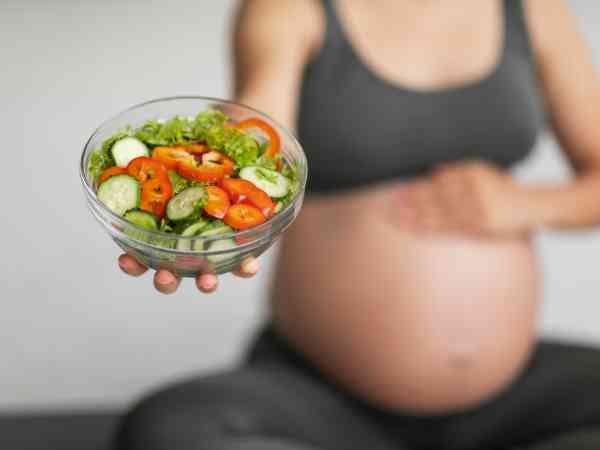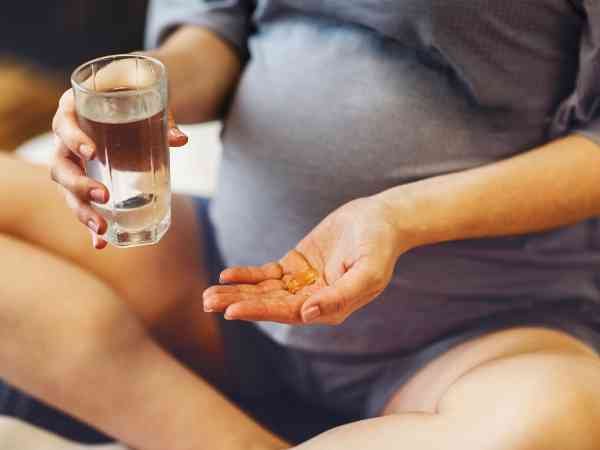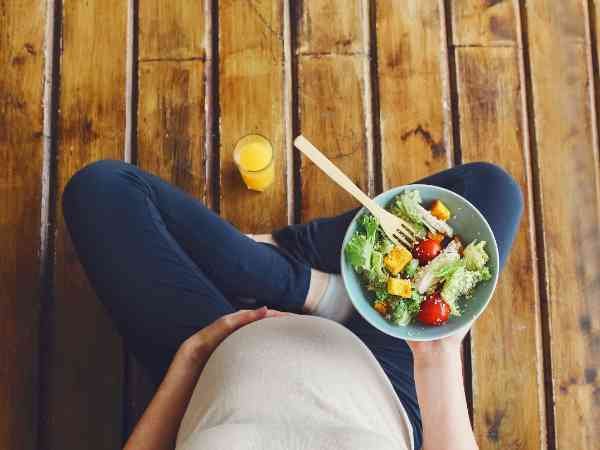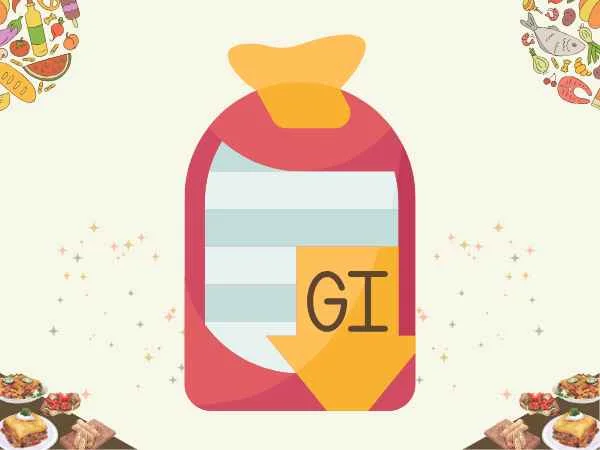Introduction
Are you curious about how to eat healthy during pregnancy? The food you eat affects both you and your baby, making it crucial to follow a balanced diet. Good nutrition is important for the baby’s growth and development and helps manage pregnancy symptoms like fatigue, nausea, and swelling. According to the NHS[1], a balanced diet can also lower the risk of complications like gestational diabetes and preeclampsia. In this article, we’ll help you understand what to eat during pregnancy and how to follow a diet chart for pregnant womans.
The Importance of a Balanced Diet During Pregnancy
What Happens During Pregnancy? Pregnancy causes many changes in your body. You need more energy and nutrients to support the growing baby. For instance, your body produces more blood, and your iron needs increase. According to the CDC[3], a poor diet during pregnancy can lead to problems like anemia, low birth weight, or delayed development in the baby. [4]

Key Nutrients for Pregnant Women
Some nutrients are especially important during pregnancy. These include:
- Folic Acid: This helps prevent birth defects in the baby’s brain and spine. You should aim for 600 mcg daily. [5]
- Iron: This nutrient supports oxygen supply to the baby. Pregnant women need around 27 mg of iron per day. [6]
- Calcium: Important for the development of the baby’s bones and teeth. You should consume about 1,000 mg of calcium daily.
- Protein: This is necessary for the baby’s tissues and brain development. Aim for 71 grams of protein each day. [7]
- Omega-3 Fatty Acids: These support the baby’s brain development. Foods like salmon, walnuts, and chia seeds are good sources of omega-3s. You need 200-300 mg of DHA daily.
Foods to Include in a Pregnancy Diet
Your nutritional needs change throughout pregnancy, so it is important to adjust your pregnancy food chart month by month.
1st Trimester:
During the first trimester, many women experience nausea. Eating small meals with easy-to-digest, nutrient-rich foods can help you feel better. Focus on foods that are gentle on the stomach.
- Suggestions: Whole grains (oatmeal, brown rice), fresh fruits (bananas, apples), dairy (yogurt, cheese), and lean proteins (chicken, tofu).
This is a good time to create a first trimester pregnancy food chart that focuses on simple and nutritious foods to manage symptoms.
2nd Trimester:
During the second trimester, your baby’s growth picks up. Nutrient-dense foods that provide vitamins, minerals, and protein are essential.
- Suggestions: Leafy greens (spinach, kale), legumes (lentils, chickpeas), nuts, seeds, eggs, and dairy. These foods are rich in calcium, iron, and protein.
3rd Trimester:
In the third trimester, you may experience digestive problems like constipation. Fiber-rich foods and plenty of fluids will help keep your digestion smooth.
- Suggestions: Whole grains (quinoa, whole wheat bread), lentils, fruits (apples, oranges), and iron-rich foods (red meat, beans).
Foods to Avoid During Pregnancy

Why Are Some Foods Harmful?
Certain foods can be dangerous during pregnancy because they might contain bacteria or toxins harmful to your baby. According to the Food and Drug Administration (FDA), some foods can cause infections like listeria, which can lead to miscarriage or premature birth. [8]
List of Foods to Avoid:
- Raw/undercooked meats: These can carry bacteria like salmonella and E. coli. Avoid sushi, rare steak, and undercooked poultry.
- Unpasteurized dairy: This may contain harmful bacteria like listeria. Stick to pasteurized milk, yogurt, and cheese.
- Excess caffeine: Too much caffeine can lead to miscarriage. Limit your intake to no more than 200 mg of caffeine per day (around one cup of coffee).
- Alcohol: Drinking alcohol during pregnancy can lead to fetal alcohol syndrome, affecting your baby’s mental and physical development. No amount of alcohol is safe.
Sample Pregnancy Diet Chart (Week-by-Week or Trimester-Wise)
Creating a pregnancy food chart month by month can help ensure you’re getting the right nutrients throughout your pregnancy. Here’s an example of a simple diet chart for pregnant women that includes both vegetarian and non-vegetarian options.
Example Meal Plan:
- Breakfast: Oatmeal with berries and almonds. This meal provides fiber, antioxidants, and healthy fats.
- Lunch: Grilled chicken with quinoa salad, leafy greens, and a side of vegetables. You get protein, fiber, and essential vitamins from this meal.
- Dinner: Lentil soup with brown rice and a side of yogurt. This is a good source of protein, iron, and calcium.
- Snacks: Mixed nuts, whole grain crackers, or a smoothie made with yogurt, bananas, and chia seeds.
Using a pregnancy food chart month by month, like this, helps ensure balanced meals and sufficient nutrition during every stage of pregnancy.
Hydration and Supplements

Importance of Staying Hydrated: Drinking enough water is just as important as following a healthy diet chart for pregnant women. Water[9] helps transport nutrients to your baby and supports your growing blood volume. Aim for 8-10 glasses of water each day. [7]
Supplements:
- Folic Acid: Take 600 mcg of folic acid daily to help prevent neural tube defects.
- Prenatal Vitamins: These help fill any nutritional gaps and ensure that you and your baby are getting the right vitamins and minerals.
- Iron & Calcium: Iron supplements prevent anemia, and calcium ensures your baby’s bones develop properly. These are especially important in the second and third trimesters.
Common Pregnancy Nutrition Myths (And the Truth)
Myth: “You need to eat for two.”
Fact: You don’t need to double your food intake. The extra calories needed are only about 300-500 calories per day in the second and third trimesters.
Myth: “Avoid exercise during pregnancy.”
Fact: Moderate exercise, like walking or swimming, is encouraged during pregnancy. It can help manage weight and improve your mood, as long as your doctor approves.
Dealing with Common Pregnancy Issues through Diet

Morning Sickness: If you have nausea in early pregnancy, try eating small, bland meals. Foods like crackers, ginger tea, and toast can help calm your stomach. This is especially important when planning a first month pregnancy food chart.
Heartburn: Avoid spicy, fatty foods, and caffeine. Try to eat small meals and drink plenty of fluids between meals.
Constipation: Include more fiber-rich foods like fruits, vegetables, and whole grains in your first trimester pregnancy food chart to keep your digestion smooth.
Swelling and Bloating: Cut back on sodium and focus on foods rich in potassium, like bananas, to reduce water retention.
When to Consult a Doctor or Nutritionist

There are certain signs during pregnancy that may indicate you need to see a doctor or nutritionist:
- Red Flags: If you experience sudden weight gain or loss, severe food aversions, or constant nausea that prevents you from eating, seek medical advice.
- Personalized Diet Plans: If you have conditions like gestational diabetes, a doctor or nutritionist can help create a pregnancy food chart month by month that meets your specific needs.
Eating a balanced diet is one of the best things you can do for your baby’s health. By following a diet chart for pregnant women, you’ll make sure you get the essential nutrients needed for a healthy pregnancy.
Focus on whole, natural foods, stay hydrated, and consult your doctor for personalized guidance when necessary. A healthy diet chart for pregnant women is key to a smooth and healthy pregnancy.
Join our newsletter for more tips or download our free pregnancy meal planning guide!
Frequently Asked Questions
Q1. Can I drink coffee while pregnant?
Ans – Limit caffeine to 200 mg per day (about one cup of coffee). Too much caffeine can lead to miscarriage or low birth weight.
Q2. What are the best snacks during pregnancy?
Ans – Healthy snacks include mixed nuts, yogurt, fresh fruits, and whole grain crackers.
Q3. How much weight should I gain during pregnancy?
Ans – The average weight gain during pregnancy is 25-35 pounds. This can vary, so consult your doctor for personalized advice.
Q4. Can I eat seafood while pregnant?
Ans – Yes, but choose fish with low mercury levels like salmon, shrimp, and tilapia. Stay away from fish high in mercury, such as shark, swordfish, and king mackerel. It is safe to eat 2-3 servings of low-mercury fish per week.
Q5. Is it safe to eat spicy food during pregnancy?
Ans – Yes, but spicy foods can sometimes cause heartburn or indigestion, especially later in pregnancy. If it makes you feel uncomfortable, try eating less of it or avoid it.
Q6. Do I need to take prenatal vitamins if I eat healthy?
Ans – Yes, even if you eat well, prenatal vitamins are important to make sure you and your baby get enough key nutrients like folic acid and iron.
References
We value truthful content. 9 sources were referenced during research to write this content.
- (n.d.). NHS website for England - NHS. Retrieved from https://www.nhs.uk/
- (n.d.). NHS website for England - NHS. Retrieved from https://www.nhs.uk
- BRISE, H. (1962, January 12). Influence Of Meals On Iron Absorption In Oral Iron Therapy. Acta Medica Scandinavica. Wiley. http://doi.org/10.1111/j.0954-6820.1962.tb18681.x
- (n.d.). Centers for Disease Control and Prevention | CDC. Retrieved from https://www.cdc.gov
- World Health Organization (WHO). (n.d.). World Health Organization (WHO). Retrieved from https://www.who.int
- Office of Dietary Supplements (ODS). (n.d.). Office of Dietary Supplements (ODS). Retrieved from https://ods.od.nih.gov
- (n.d.). Help us improve the health of all moms and babies | March of Dimes. Retrieved from https://www.marchofdimes.org
- (n.d.). U.S. Food and Drug Administration. Retrieved from https://www.fda.gov
- (n.d.). Help us improve the health of all moms and babies | March of Dimes. Retrieved from https://www.marchofdimes.org/

